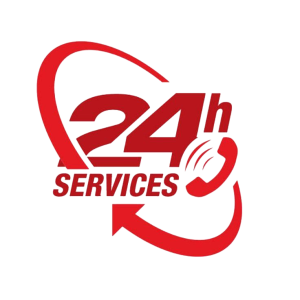Caring for a machine can feel like a unceasing burden on your resources. Coupled with energy, assurance, and regular upkeep, the expenditures can add up rapidly. But what if you could adopt a more preventative way to your auto’s fitness and save some significant savings in the process? Here comes the zero-cost car diagnostic assessment. This extensive manual is your directory to grasping how you can perform a no-charge car diagnostic analysis personally, empowering you to keep your auto operating efficiently without becoming bankrupt. Free Car Diagnostic Check
We’ll explore assorted strategies for implementing a gratis car diagnostic inspection, from operating without charge vehicle diagnostic tools and platforms to employing the might of mobile applications. We’ll also analyze crucial self-sufficient diagnostic tips, help you interpret those enigmatic error codes, and openly discuss the restrictions of complimentary checks. Consider this your personalized walkthrough to becoming more car-savvy and overseeing your ride’s preservation. After all, it’s unpleasant to be abandoned on the shoulder with a auto malfunction they could have managed. https://cardiagtech.net/
Understanding the Importance of Car Diagnostics
Periodic auto diagnostics are utterly essential for detecting developing snags before they amplify into significant, and often high-priced, troubles. Picture it as going to the doctor for a check-up – quick recognition can keep you from a lot of pain and heartache (and in this case, car breakdowns and considerable repair outlays!). A costless car diagnostic evaluation can provide important knowledge into your car’s total well-being, specifying problems like engine sputtering, sensor errors, or even transmission faults. This knowledge allows you to make wise determinations about repairs, addressing minor issues before they become major troubles. This prepared plan not only cuts your costs but also is a vital component of the long life and stability of your automobile, safeguarding you and on the road. Considering everything, who wouldn’t desire to avoid those unanticipated and high-priced outings to the auto repair shop?
Free Car Diagnostic Check Options
Consequently, how can you actually undertake a no-charge car diagnostic assessment? You might be shocked to learn that there are several alternatives accessible, each with its own benefits and downsides. Let’s dissect them:
Costless OBD2 Scanners: What to Assume: While the term “no-charge OBD2 scanner” might raise doubts, there are some budget-friendly choices that offer elementary diagnostic possibilities. However, it’s necessary to do your investigation and choose reliable brands. Unfortunately, truly “zero-cost” scanners are rare, and often the costless versions have reduced capabilities. See it as a sample version – it might give you a preview of capabilities, but you’ll very likely need to enhance for the complete functionality. Always be suspicious of unbelievably cheap or “suspicious” offers, as they may be of inadequate quality or even bogus. A good basis for researching OBD2 scanners is this article on choosing an OBD2 scanner.
Gratis car diagnostic tools: Investigating the options: The realm of applications offers some significant potential for a free car diagnostic check. Different no-charge car diagnostic software programs are available online, and when in association with an auto diagnostic plug (which you’ll in all probability have to get), they can provide helpful data into your motorcar’s systems. These programs often attach to your automobile’s computer and allow you to obtain fault codes, inspect immediate data from probes, and sometimes even execute elementary tests. However, a caveat: be very wary when grabbing zero-cost software. Make entirely positive it comes from a trusted source to prevent any malicious software or digital viruses that could compromise your PC. Always check reviews and evaluate the trustworthiness of the program before downloading.
Implementing handheld apps for Gratis diagnostics: In today’s digital age, even your mobile device can participate in a zero-cost car diagnostic scan. Several handheld apps, both complimentary and upgraded, can connect to your auto via an vehicle diagnostic connector and present diagnostic insights. zero-cost versions of these tools often offer standard functionality, such as reading DTCs, while enhanced versions unblock more complex features like immediate data feed, graphing, and even the ability to reset certain codes. Likewise, do your analysis and read reviews before selecting an app. A good basis is to query your device app center for “on-board diagnostic scanner” and see what alternatives are obtainable. Bear in mind, the caliber and capabilities of these programs can diverge considerably.
We’ll continue investigating do-it-yourself diagnostic advice and the weaknesses of zero-cost checks in the later segment of these instructions. Keep watching!
DIY Car Diagnostics: Tips and Tricks
Now that you understand the resources accessible for a gratis car diagnostic analysis, let’s study some effective recommendations and procedures to help you capitalize on their potential. Keep in mind, even with the fitting tools, some expertise is essential to precise diagnosis.
Reading and Interpreting OBD codes: Vehicle codes are like your car’s technique for notifying you something’s wrong. When your auto’s computer recognizes a fault, it retains a unique code. These malfunctions, known as Error codes, are essential for discovering the origin of the malfunction. View them as clues in a car detective story! Your zero-cost OBD2 scanner or diagnostic application will allow you to get these defects. But only having the code isn’t enough – you need to grasp its meaning. Mercifully, many online resources and diagnostic software programs can help you unravel these errors. A prompt search for “[DTC code] meaning” (replace “[DTC code]” with the actual code) will often provide you with a plethora of information. However, note that a vehicle code only suggests a developing snag region; supplementary investigation is commonly needed.
Common Car Problems You Can Troubleshoot at home: With a no-charge car diagnostic assessment, you can often diagnose several common car problems at home. These consist of:
Backfires: A misfiring engine can cause jerky idling, reduced power, and poor fuel economy. DTCs related to combustion problems will often suggest which cylinder bore is modified.
Sensor malfunctions: Malfunctioning sensors, such as oxygen level sensors or mass airflow sensors, can prompt indicator lights and modify engine behavior.
Emission compliance troubles: Faults with the exhaust system can also prompt DTCs and may demand specialist help.
Simple electrical problems: Some zero-cost diagnostic tools can help identify standard electrical defects, such as defective sensors or wiring troubles.
Manual examinations: The Significance of visual examination: Don’t minimize the significance of a time-tested physical inspection! Before connecting your code reader, inspect under the hood. Inspect for manifestations of malfunction, such as discharges (petroleum, heat transfer fluid, stopping fluid), damaged belts, broken hoses, or faulty connections. A visual check can often show troubles that a OBD2 reader might fail to notice.
Sound assessment: Your Ride’s message: Your car often indicates through noises. Listen carefully to any unusual noises, such as squeals, clatters, strikes, or hisses. These noises can present significant indications about possible issues. For illustration, a shrill noise when braking could highlight consumed brake pads, while a jingling noise underneath the automobile could be a clue of a wobbly element.
Limitations of Free Diagnostic Checks
Notwithstanding that a free car diagnostic check is an incredibly valuable tool, it’s key to appreciate its constraints. It’s not a quick fix that can solve all your auto problems.
Limited Functionality: No-charge tools and tools often have limited functionality compared to professional-grade diagnostic implements. They might just be capable of accessing basic DTCs and may not offer complex features instantaneous data transfer, system testing, or updating.
Validity concerns: The validity of no-charge diagnostic instruments can vary significantly. Some may not offer dependable outcomes, and others might even furnish you with misleading readings. This is why it’s essential to choose reputable brands and tools from credible sources.
Unable to conduct certain assessments: Particular diagnostic evaluations, such as those requiring particular instruments (like engine compression test or fuel supply pressure test), cannot be performed with gratis tools. These diagnostics often necessitate the competence and devices of a qualified technician.
Error codes are merely suggestions: Bear in mind that trouble codes are only leads, not final diagnoses. They lead you to the general area of the difficulty, but additional investigation is typically required to specify the actual cause. A OBD code for a combustion problem, for demonstration, could be be attributed to a faulty spark plug, a damaged ignition coil, a fuel injector error, or even a compression fault.
When to Consult a Professional Mechanic
In spite of the greatest no-charge car diagnostic assessment procedures, there are moments when it’s undeniably critical to seek advice from a car repair expert.
Complicated problems: If your no-charge diagnostic assessment shows a difficult or recurring issue that you’re not equipped to resolve yourself, it’s always best to secure professional advice. Resist the urge to try to mend something beyond your skill level, as you could possibly exacerbate the issue.
Indecipherable results: If you’re unclear how to explain the results of your assessment, or if you’re getting discrepant information, seek advice from a expert. They have the expertise and training to precisely identify the fault.
Well-being issues: If the problem involves a important system, such as the deceleration system, steering, or safety bags, act immediately to take your car to a specialist right away. Your safety is highest.
Persistent problems: If you’ve tried to resolve a fault yourself and it persists in returning, it’s time to call in the professionals. They can recognize core issues that you might have missed.
Next, we will discuss we will discuss going with the proper zero-cost car diagnostic scan method and taking full advantage of the profits of your diagnostic efforts.
Choosing the Right Free Car Diagnostic Check Method
Due to the multiple possibilities obtainable for a free car diagnostic check, how do you choose the right one for you? The best method hinges on a few important factors:
Your digital literacy: Are you comfortable working with PCs and applications? If not, a simple OBD2 scanner with a unambiguous screen might be the most advantageous avenue. If you’re technically skilled, you might be inclined towards the range of diagnostic platforms or smartphone apps.
Your money: While the target is a free check, you might need to purchase an vehicle diagnostic connector if you anticipate using systems or platforms. Bear in mind your capital and go with a strategy that fits within your means.
The depth of diagnostic information you need: Are you just seeking core trouble codes, or do you require more advanced features like on-the-spot data flow and device testing? Free tools generally provide basic functionality, while pro options (if you select that option) unlock more advanced features.
Your motorcar’s compatibility: Not all diagnostic tools are operate with all motorcar models. Before obtaining any code reader or system, check it’s functions with your machine’s make, model, and year.
Maximizing the Benefits of Your Free Car Diagnostic Check
A costless car diagnostic evaluation is most valuable when used in conjunction with other anticipatory auto care procedures. Here’s how to maximize the benefits:
Recurring upkeep: Don’t be exclusively reliant on diagnostic scans. Regular maintenance, such as motor oil changes, filter changes, and fluid inspections, is vital for ensuring your auto’s efficient operation.
Ocular assessments: As indicated earlier, sight checks are key. Frequently observe for escapes, worn parts, and other hints of trouble.
Active listening: Be observant of any unusual sounds your auto makes. These audio can often supply important information about likely difficulties.
Document information: Register in-depth records of your diagnostic analyses, any adjustments you make, and your routine upkeep schedule. This information will be invaluable when troubleshooting possible problems.
Integrate techniques: Don’t be reluctant to use a variety of diagnostic systems. For case, you might use an car code reader to look for error codes and then undertake an ocular assessment to probe further the problem.



